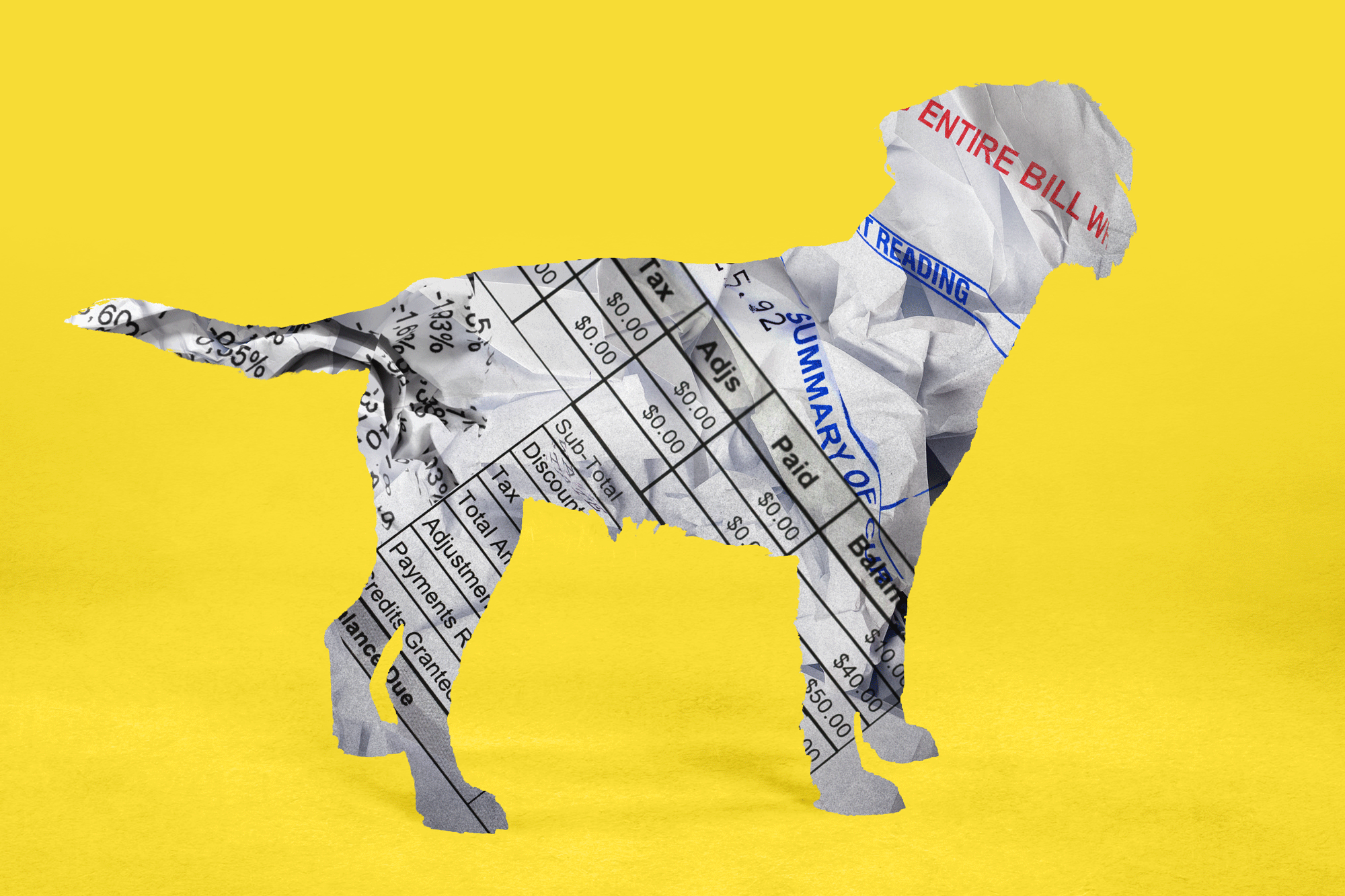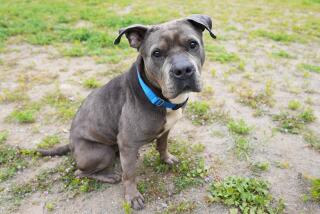For dog owners, treatment of pet’s cancer is not a choice
- Share via
Two years ago, both of Dana Nelson’s golden retrievers were diagnosed with cancer a day apart. She took them to the University of Wisconsin veterinary school in Madison for radiation and chemo, making the two-hour drive from her home in St. Charles, Ill., more than 20 times. At home she made them meals of raw meat, steamed vegetables and vitamins.
Conventional treatment cost about $14,000, and Nelson said she couldn’t even estimate how much she spent on holistic therapy, supplements and extra consultations for Jazz, who lived an extra 10 months, and Cameo, who survived 17. Nelson, a dog trainer, is still paying off vet bills.
“You go out to dinner less often, treat yourself less,” she said. “I wouldn’t do anything differently.”
Nelson isn’t alone. As new tests and treatments become available, more dog owners are choosing to treat their canine’s cancer, no matter the cost. Cancer is the leading cause of death in dogs, killing one in four, and it’s the fastest-growing pet insurance claim. The Morris Animal Foundation, a nonprofit devoted to funding animal-health research, has launched a $30-million campaign to cure the disease within 20 years.
Ironically, vets say, cancer is in the spotlight because more dogs now live long enough to get it, thanks to leash laws, better nutrition and vaccines. “The high cancer incidence is the result of a good thing,” said David Vail, professor of oncology at the Wisconsin vet school. Cancer kills half of dogs older than 10 and has become an epidemic now that the geriatric canine population is higher than ever -- about 40% of America’s 45 million dogs.
The typical intensive course of treatment -- usually a combination of surgery, chemo and radiation -- costs about $10,000, said Lillian Duda, professor of radiation oncology at the University of Pennsylvania veterinary school.
There’s no shortage of owners willing to pay. Jan Dykes, a nurse from Leavenworth, Kan., has lost four dogs in the last five years to cancer and just finished paying off more than $40,000 in veterinary bills. “People kept telling us, ‘They’re just dogs,’ ” she said. “But you can’t understand unless you’ve had one.”
Joan Travelstead, a sales rep who works in Crystal Lake, Ill., spent $4,500 on chemo for her 4-year-old golden retriever, Shadow. Travelstead is a single mother with two children, and the family cut back on dining out and entertainment to make ends meet.
Statistically, Shadow will probably relapse within a year and need another round of chemo -- and as long as he isn’t suffering, Travelstead will continue treatment. “I’d sell everything I owned to keep him around.”
But what does Shadow want? It’s an ethical quagmire.
“You can’t explain to a dog why we’re sticking him with a needle,” Duda said. The silver lining: “Dogs don’t wake up worrying, ‘Is my cancer back?’ If they feel bad one day, they don’t remember it the next.”
Owners should periodically ask themselves a few questions: Is the dog happy to see me? Is he eating?
“It’s different for every dog,” said Sue Lana, oncology professor at Colorado State University. “Whatever they like to do -- whether it’s running six miles or lying on the couch all day -- once they stop doing that, you know it’s time.”
The possibility of preventing canine cancer is hazy. But many vets agree that commercial dry food may not be the best preventative. Cancer feeds on carbs, and cheap kibble is largely made from grains such as corn and poor-quality meat byproducts. According to Marty Goldstein, Oprah Winfrey’s vet and a regular guest on her show, dogs should eat a mix of raw meat and vegetables, but that’s often unrealistic for most owners. On his website drmarty.com/feeding.htm, Goldstein also suggests a mix of superpremium, grain-free canned and dry foods.
A few owners, such as Elaine Cuttler, refuse to settle when it comes to fighting cancer. Every night, the nurse from Millburn, N.J., cooks her 10-year-old shepherd mix, Shayna, a grain-free dinner of organic chicken, broccoli and pumpkin.
Cuttler has spent $27,000 on treatment for Shayna’s renal cancer, giving the dog more than 10 vitamin supplements and twice-a-day enemas with ozone-infused water, which she believes kill the cancer cells.
Her husband calls the treatment “over the top,” and her mother says she’s getting ripped off.
“But I’ll never second-guess the decisions I made,” she said. “I have to know I did everything I could.”
More to Read
Sign up for Essential California
The most important California stories and recommendations in your inbox every morning.
You may occasionally receive promotional content from the Los Angeles Times.










